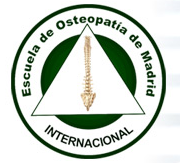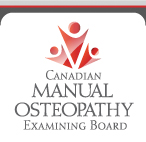by Caroline Markolin, Ph.D.
 Computer tomograms of the brain are commonly used as a means to look for brain tumors or other cerebral ”disorders“. But in 1981, Dr. med. Ryke Geerd Hamer, internist and originator of German New Medicine, made a startling discovery. By analyzing and comparing thousands of brain scans with his patients’ history, Dr. Hamer established that every disease – from a cold to cancer - is initiated by an unexpected conflict shock.
Computer tomograms of the brain are commonly used as a means to look for brain tumors or other cerebral ”disorders“. But in 1981, Dr. med. Ryke Geerd Hamer, internist and originator of German New Medicine, made a startling discovery. By analyzing and comparing thousands of brain scans with his patients’ history, Dr. Hamer established that every disease – from a cold to cancer - is initiated by an unexpected conflict shock. Dr. Hamer found that such an unforeseeable conflict (unexpected anger or worry, an unexpected loss or separation, an unexpected insult, etc.) occurs not only in our psyche but simultaneously in the brain and on the corresponding organ. The moment we suffer the conflict, the shock strikes a specific area in the brain causing a lesion that is clearly visible on a brain scan as a set of sharp target rings (see picture above). With the impact the affected brain cells send a biochemical signal to the cells in the corresponding organ causing either the growth of a tumor, a meltdown of tissue or functional loss, depending on which brain layer received the conflict shock.
The reason specific conflicts are irrefutably tied to specific areas in the brain is that during our historical evolution, each brain layer was programmed to respond instantly to conflicts that could threaten our survival. While the brain stem (the oldest part of the brain) is programmed with basic survival issues like breathing, reproduction and food, the cerebrum (the youngest part of the brain) is concerned with more advanced themes such as territorial conflicts, separation conflicts or self-devaluation conflicts.
After identifying the brain as the mediator between the psyche and the organ, Dr. Hamer found that the target configuration only remains sharp as long as the person was in conflict activity. Once the conflict is resolved, the brain lesion enters – along with the psyche and the organ - the phase of recovery. Like with any wound that is repaired, an edema develops that protects the brain tissue during the healing process. On the brain scan we can see the changes: the sharp target rings that submerge in the edema now appear blurry, indistinct and dark. These observations confirmed Dr. Hamer’s findings that every disease runs in two phases: first, a conflict active phase, characterized by emotional stress, cold extremities, a lack of appetite, and sleeplessness, and then, provided we manage to resolve the conflict, a healing phase. The healing phase, commonly referred to as ”disease“, is often a difficult process with fatigue, fever, inflammations, infections, and pain.
At the height of the healing phase the brain edema reaches its maximum size, and exactly at this moment, the brain triggers a brief, strong push that presses the edema out. With German New Medicine, this crucial moment is called the Epileptoid Crisis (EC). Heart attacks, strokes, asthma attacks, bleeding tumors, migraine attacks, or epileptic seizures are just a few examples of this crisis. The symptoms always depend on the nature of the conflict and which brain layer is affected. After the brain edema is pressed out, neuroglia (brain connective tissue that provides structural support for the neurons) assembles at the site to restore the function of the nerve cells that were affected by the conflict shock. It is this harmless glia accumulation that is commonly called a brain tumor, even though it is actually a healing brain lesion. Dr. Hamer already established in 1982 the link between these ”brain tumors“ and simultaneous disease manifestations on the corresponding organs.
The above brain CT shows a target configuration (Hamer Focus, HH) in the right hemisphere of the sensory cortex of the cerebrum. The exact location indicates that the patient suffers from sensory loss in the left leg as a result of a separation conflict. Since the rings are sharp, we can conclude that the conflict has not yet been resolved. But why is the left leg affected rather than the right? Since the brain plays such an integral part in German New Medicine, laterality always has to be taken into account. The easiest way to establish our laterality is the clapping test. The hand on top is the leading hand and identifies whether we are right-handed or left-handed. This in turn determines on which side of the brain the conflict will impact and consequently which side of the body will be affected. There are two principles of laterality:
 1) A right-handed person responds to a conflict with his/her mother or chil¬dren with the left side of the body, and to a conflict with a partner (everybody except mother or children) with the right side of the body. With left-handed people this is reversed.
1) A right-handed person responds to a conflict with his/her mother or chil¬dren with the left side of the body, and to a conflict with a partner (everybody except mother or children) with the right side of the body. With left-handed people this is reversed. 2) There is always a cross-over correlation from the brain to the organ.
The therapy of German New Medicine focuses on identifying and most of all on resolving the conflict because only the resolution of the conflict allows healing to occur. The responsibility of the GNM practitioner is to assist the patient while the healing process runs its natural course. A brain scan together with a thorough medical history is vital to establish the duration of the healing phase as well as complications that can be expected. Specific ”constellations“ of brain lesions determine if it is even feasible to resolve the conflict(s) since the resolution of long-term conflicts can trigger a life-threatening healing phase. Given the potential dangers, reading brain scans according to German New Medicine is a highly responsible task that requires extensive training.
© 2006 by Caroline Markolin
Extract from: www.LearningGNM.com
Go to Content








 3:30
3:30
 Daniel Enriquez de Guevara
Daniel Enriquez de Guevara





























.jpg)






















0 comentarios :
Publicar un comentario